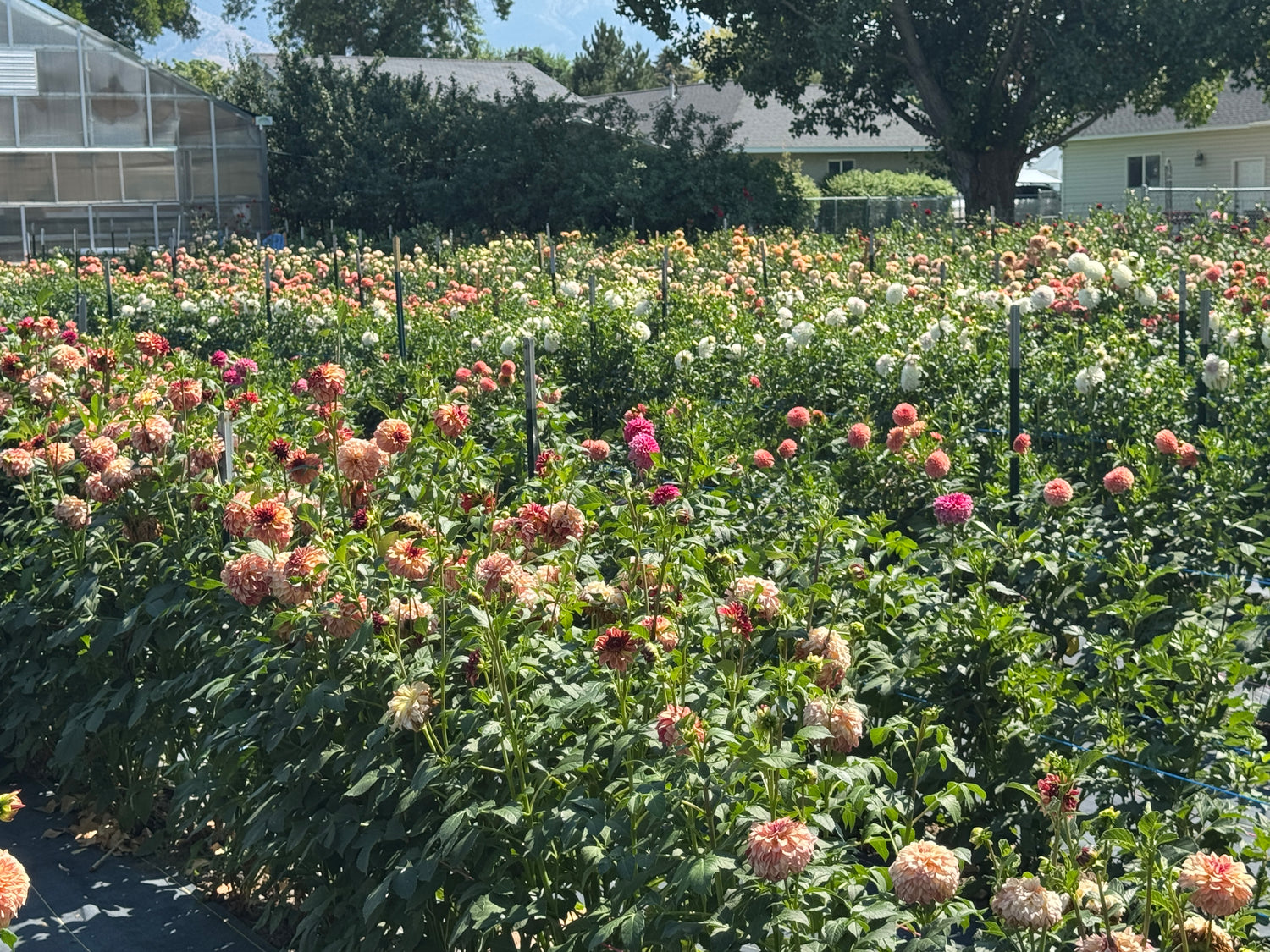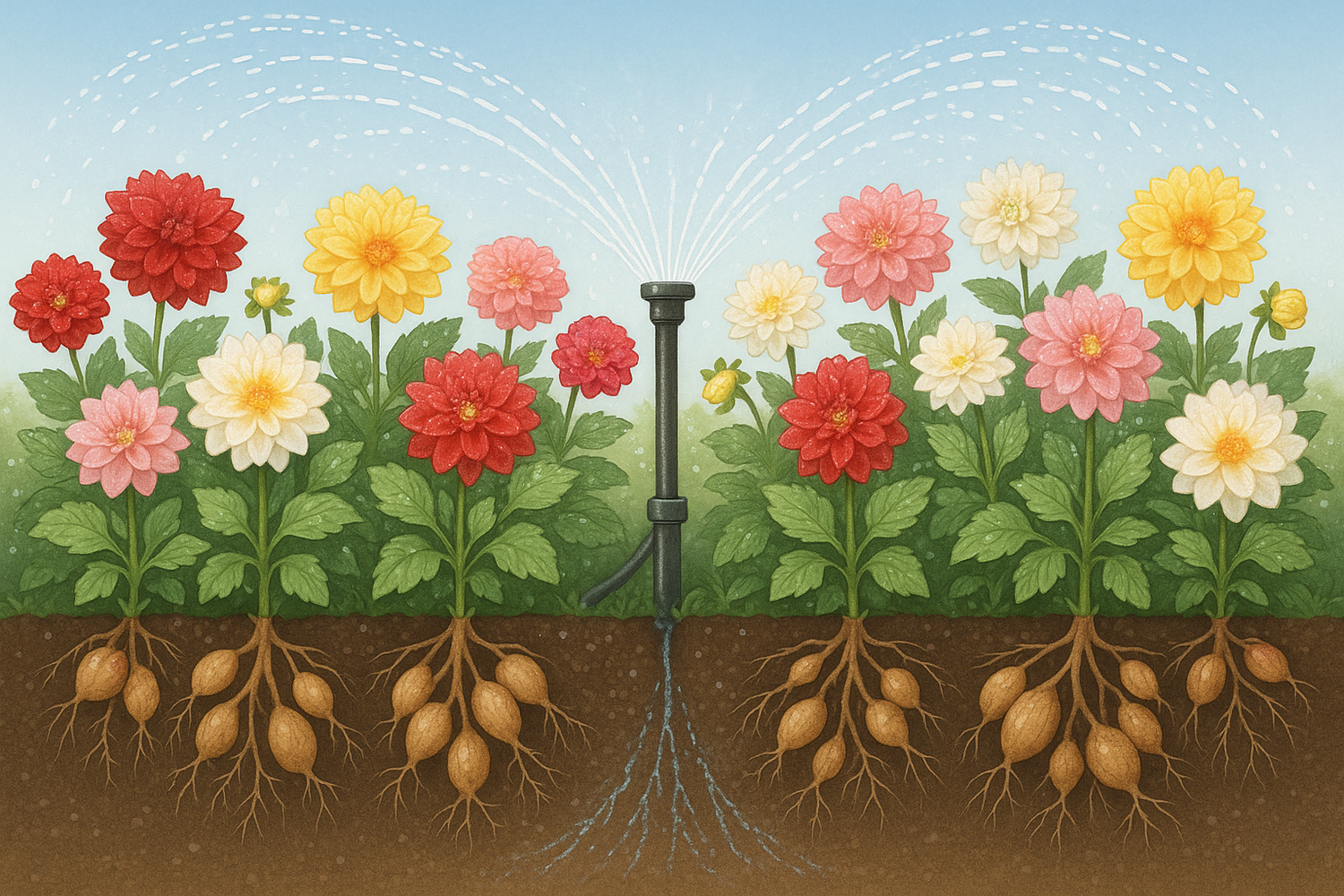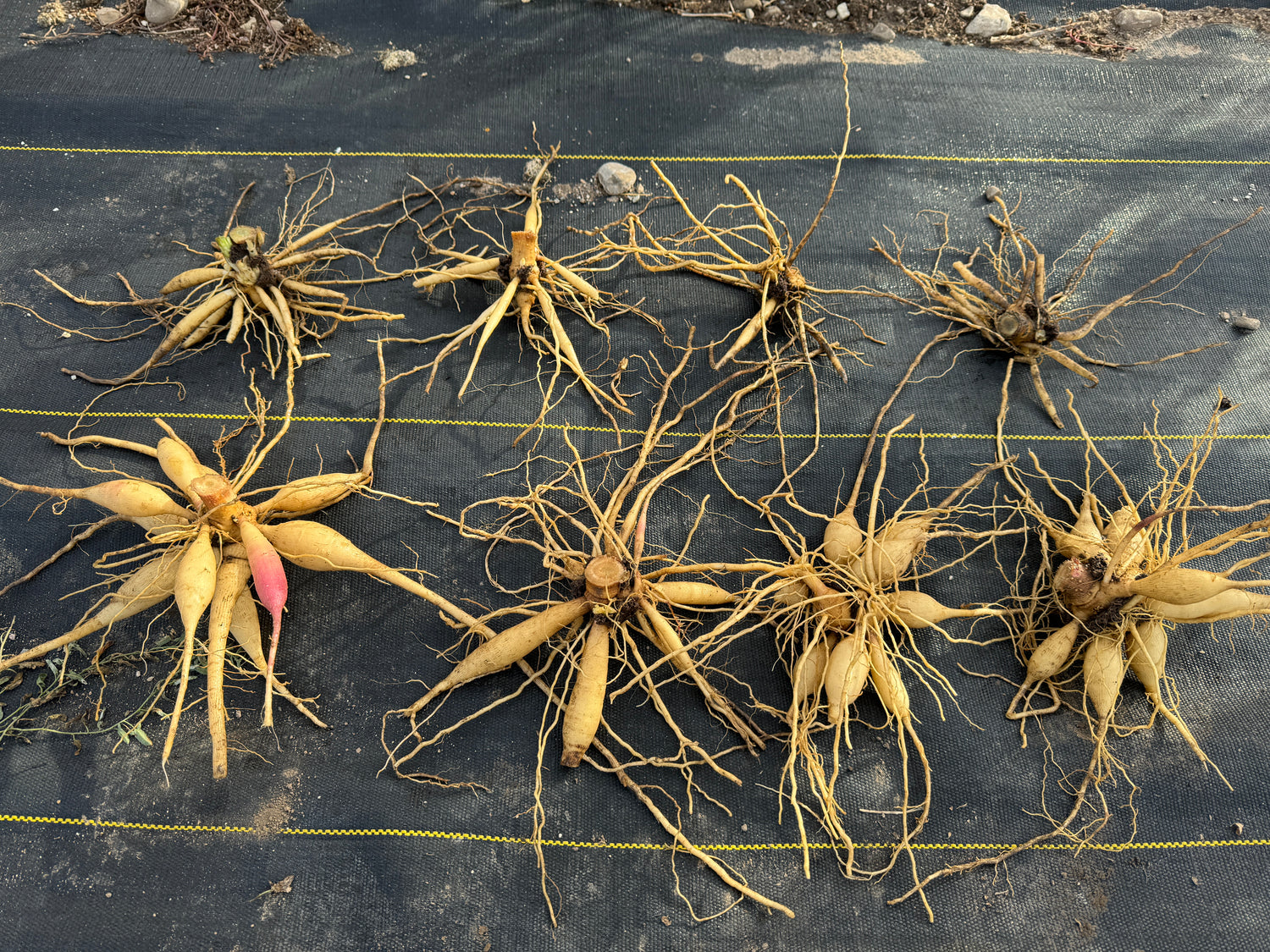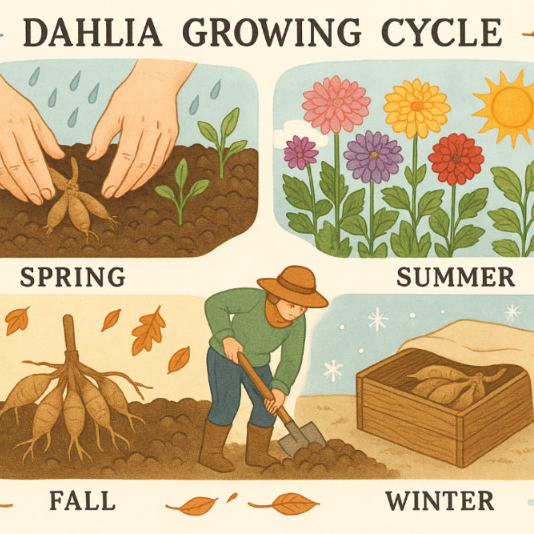
Growing Exceptional Dahlias
There is more to growing dahlias than getting pretty flowers. We know that healthy plants, abundant blossoms, and good tuber production are important to you. These are not separate issues with individual magic fixes. They are all affected by every part of the growing process.
From spring planting to fall digging there are many things experienced growers learn to do to ensure they have a great crop. We'd like to share some of the practices that work for us.
Soil is probably the most important factor in having both healthy plants with lots of flowers and good tuber production. When we bought our property 8 years ago and planted our field for the first time, we were disappointed when our dahlias struggled to grow and produced almost no flowers or tubers. The ground had been weeds for almost 20 years, and the soil was poor. There were not even any worms! We started adding large amounts of organic matter every fall as we prepared the ground for winter. Along with the organic matter, which for us is mostly leaves, we added nitrogen to feed the microbes. We saw a small difference in the first year, and each season after that got increasingly better. Now our soil is full of organic matter, the worms have moved back in, and we grow healthy, strong dahlias with an abundance of blooms and good tuber production. If you want, your local extension agency can test your soil and tell you what it is missing and what it already has plenty of. That is always a great place to start!
Planting

Water and Fertilize regularly throughout the summer. Dahlias love water! Especially when it is hot. The hotter it is, the more water they need. We use drip tape to make sure that we are watering just the dahlias and not the weeds, but during our 90+ degree summers, at times we give them a little water every day.
Most people intend to fertilize, but it often gets forgotten in the busyness of the season, especially if your plants are growing and flowering well; it’s easy to think they don’t need fertilizer. However, the fertilizer is important for tuber production, especially since there is no mother tuber to feed the root system. We fertilize every two weeks, but the frequency isn’t as important as the regularity. Read the dosage amounts on the label of your fertilizer for the frequency that works best for you. The brand is not super important, and in most cases, any general all-purpose type of fertilizer will be great.
We often hear that you should not give dahlias Nitrogen, and this is just not true. At least not for everyone. Our soil has very low levels of nitrogen, and a dahlia is a green plant, and green plants need nitrogen to grow. How much you give them varies, and this is where a soil test comes in handy. If your soil already has an abundance of certain nutrients, you can alter the type of fertilizer to best fit your needs.

Sunlight
Dahlias love sunlight and should generally be planted in full sun. If they can get at least 6 hours of full sun they will be happy but can handle all day. Morning sun is best but they will take what they can get and grow with it. We have a row of tall trees planted along the west side of our field to shade them from the harsh late afternoon sun and this works well for us. Too much shade will cause the plants to be weak and spindly and produce few if any flowers. It also lessens tuber production greatly.
In this picture, you can see KA's® Blood Orange tuber clumps grown in 2024. They were all planted at the same time, but the top four were in shade for a large portion of the day. The plants were healthy looking but very small and spindly, and as you can see, the tubers they produced were much less impressive than the ones on the bottom, which received a full day of sunshine. Water and nutrients were identical, so sunshine plays an important role.
As gardeners know, Mother Earth offers no guarantees. Tuber production rates can vary widely by farm, by variety, and by a host of other factors. But even less-than-stellar tuber clumps, like the ones on the top row, can often be saved by carfully storing the entire clump for replanting in the spring.

Time in the Ground and Day Length
Producing tubers is one of the last things the plant does in the season. They should be in the ground at least 120 days, but longer can mean bigger, better-formed tubers. Those fall months are crucial for tuber production, as shorter days are one of the triggers that tell the dahlia it is time to start putting energy into tuber production.
It is fine to let them freeze before digging, and it's okay to let them stay in the ground for a couple of weeks after freezing if that works for you. It is also fine to dig them before freezing if they have had enough time in the ground.
For us, if we wait too long, we will be digging in terrible weather or will not be able to dig because of frozen ground.
-

Deadheading
Keeping your plants deadheaded during the summer forces them to put their energy into continually pushing out new flowers. In the fall, it encourages them to put their energy into tuber production instead of reproduction.
-

Pinching Off Pre-mature Flowers
If a cutting starts blooming when the plant is still small, it is best to simply remove the bud so the plant can focus energy on strong foliage and root growth. This seems like a sacrifice to some people because early blooms are fun, but in the long run, removing them is best.
-

Topping
Topping greatly increases the number of stems coming from a plant, which in turn increases the number of blooms you can potentially get in the summer. It may set back that first flower a bit, but it gives you stronger, bushier plants and more flowers.
-

Color Variations
Color and form can be affected by the environment. Often, a dahlia will display different variations of color throughout the season. Maybe they are more orange than pink or more yellow than beige - this is a normal thing. Very hot temperatures affect both color and form, but as the weather cools toward the end of summer, the dahlias start to really shine and show off their most vibrant colors.
-

Variety
Different varities have different habbits that make them unique. Some varities of dahlias have beautiful flowers but don't produce very many blooms. Some grow tall and others are short. Some struggle in the heat and others don't seem to care. Some reliably produce huge tuber clumps while others make few tubers but are still worth growing for their abundant, beautiful flowers.









